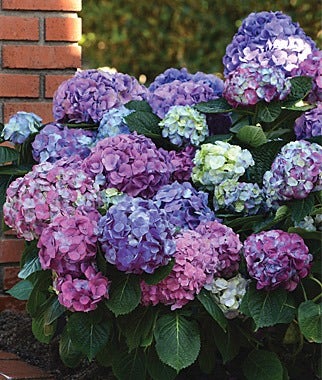We use cookies to give you the best experience on our website. These cookies are completely safe and secure and will never contain any sensitive information. Please read our Privacy Policy. By clicking "Ok" or clicking on any other content, you agree that cookies can be placed.
How to prune common shrubs
Many common shrubs fall into two groups – those that grow new stems from the base each year, as well as continue to grow from the top and those that put new growth onto existing stems. Although there are some common pruning techniques that can apply to both, it is easier to look at them separately. Shrubs also differ in when they bloom making the time that you prune important too.
Multi Stemmed Shrubs: Forsythia, Virburnums as well as both the red and yellow stemmed dogwoods, are all this type of shrub. Each spring new growth shoots up from that base and the shrubs get larger as well as taller. With the red and yellow stemmed dogwood, the new growth is brightly colored and gets darker as it ages. Most of these shrubs also bloom better on young wood, so a tangled mass of old forsythia will not bloom as well as young bushes. As the bush becomes larger and more congested, the new growth is inhibited and fails to thrive adding to the decline of the shrub.
The best way to prune very old multi stemmed shrubs is to take out one third of the oldest stems each year, for three consecutive years. This encourages new growth to form and by year three, all your stems will be young enough to bloom. With the colored twig dogwoods, you can take out all old stems each year to maximize the production of new stems which are the main feature of the shrub.
All these shrubs can, if necessary, be taken back to a foot or so which makes them perfect for areas where snow ploughs miss the flowerbed! The shrub will quickly recover as new growth takes off in spring.
Branching Shrubs: Hydrangeas, azaleas and roses are types of branching shrubs. Each year they put on new growth where last years’ growth left off. These shrubs can get large and be brought back under control by taking older stems back to a reasonable size. Roses, particularly climbing roses, also put out better blooms on newer wood which can be quite high if the rose has not been pruned for a while. Roses can be pruned back to only a foot or so if needed and will grow from there as well as putting out some new stems from the crown.
Timing of Pruning
Spring Blooming Shrubs: Spring is when nature puts on a terrific show with blossom both on trees and shrubs. Yellow forsythia and lilacs are just two of the shrubs that bloom early in the year. These shrubs formed the blossom last year and the pre-bloom was held in the branch until spring arrived. If you prune these shrubs in late winter you will lose some of the blooms. Wait until these shrubs have finished blooming before you prune them.
Summer Blooming Shrubs : Roses and other summer blooming shrubs create the flower on branches that grew in spring. The bright green stems grow from older wood, and the bloom slowly forms as the branch grows. These shrubs are pruned in late winter or early spring so that new wood is created to encourage the maximum number of flowers.

